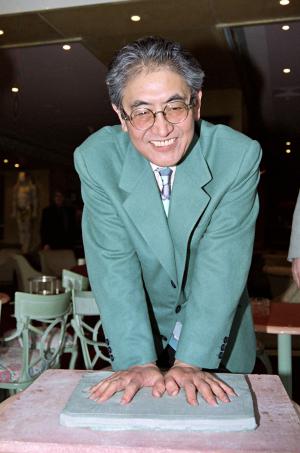
Nagisa Ôshima Net Worth is
 $1.9 Million
$1.9 Million
Mini Biography

Nagisa Oshima’s profession extends in the initiation from the “Nuberu bagu” (New Influx) motion in Japanese movie theater in the past due 1950s and early 1960s, towards the modern use of movie theater and television expressing paradoxes in society. After an early on involvement using the pupil protest motion in Kyoto, Oshima increased quickly in the Shochiku firm from the position of apprentice, in 1954, compared to that of movie director. By 1960, he previously grown up disillusioned with the original studio production insurance policies and broke from Shochiku to create his own unbiased production firm, Sozosha, in 1965. With various other Japanese New Wave filmmakers, like Masahiro Shinoda, Shôhei Imamura and Yoshishige Yoshida, Oshima reacted against the humanistic design and subject material of directors like Yasujirô Ozu, Kenji Mizoguchi and Akira Kurosawa, aswell as against set up left-wing political actions. Oshima continues to be primarily worried about depicting the contradictions and tensions of postwar Japanese culture. His films have a tendency to expose modern Japanese materialism, while also evaluating what this means to become Japanese when confronted with speedy industrialization and Westernization. A lot of Oshima’s previous films, such as for example Ai to kibô simply no machi (1959) and Taiyô simply no hakaba (1960), feature rebellious, underprivileged youths in anti-heroic assignments. The film that he is most likely best-known in the Western world, In the World from the Senses (1976), centers around an obsessive intimate relationship. Like other Oshima functions, it gains extra power when you are based on a genuine incident. Other essential Oshima films consist of Kôshikei (1968), an study of the prejudicial treatment of Koreans in Japan; Son (1969), which handles the cruel usage of a kid for extortion reasons, and with the child’s following escapist fantasies; THE PERSON Who Put His Will on Film (1970), about another ongoing concern of Oshima’s, the artwork of filmmaking itself; and Gishiki (1971), which presents a microcosmic look at of Japanese postwar background through the lives of 1 wealthy family. Lately, Oshima has frequently turned to resources outside Japan for the creation of his movies. This was the situation with In the World from the Senses (1976) and Utmost mon amour (1986). It really is much less well-known in the Western that Oshima in addition has been a prolific documentarist, film theorist and tv personality. He’s the host of the long-running television chat show, “THE INSTITUTION for Wives”, where female individuals (kept anonymous with a distorting cup) present their personal complications, to which he responds from offscreen.
Known for movies




